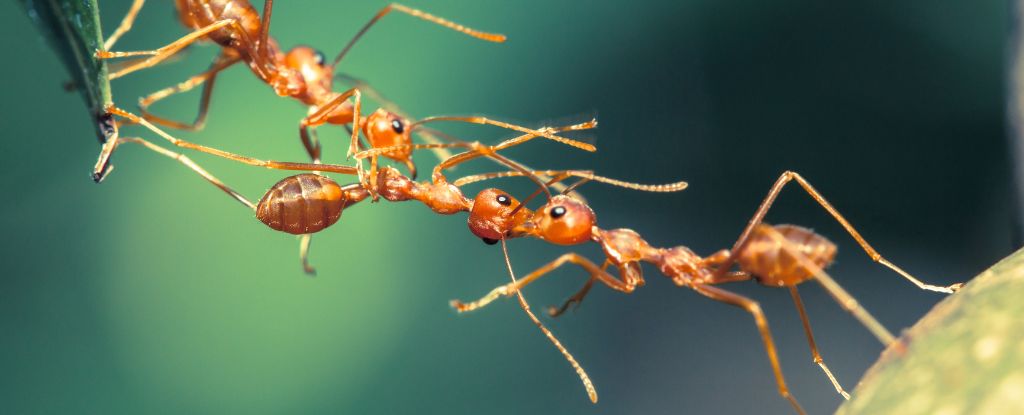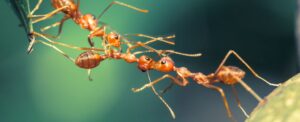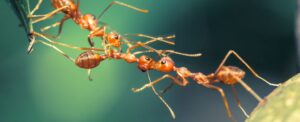
Recent research has revealed that weaver ants, known scientifically as Oecophylla smaragdina, exhibit a remarkable ability to work together efficiently, defying common expectations about teamwork dynamics. A study published in Current Biology indicates that these ants become more effective as their numbers increase, challenging the longstanding Ringelmann effect, which suggests that individual productivity diminishes in larger groups.
The Ringelmann effect, named after French engineer Max Ringelmann, describes how the average effort per individual decreases as group size increases. Ringelmann’s original experiments in the late 19th century demonstrated that while total output may rise with more participants, the individual input often declines due to factors such as coordination challenges and “social loafing.”
Ants, however, present a unique case. In their study, researchers aimed to determine if weaver ants experienced this effect while performing a task that involved pulling an artificial leaf. The researchers monitored the collective force exerted by the ants using a force meter, noting how changes in group size impacted their output.
Surprisingly, as more weaver ants joined the task, not only did the total force increase, but the force exerted by each ant also grew. This finding suggests that weaver ants are “superefficient” in their teamwork, showcasing an ability to enhance individual performance within a larger group.
Mechanism of Superefficiency
The study identified that the arrangement of ants significantly influences their collaborative efficiency. The weaver ants demonstrated optimal performance when forming a single, long chain, rather than multiple shorter chains. This formation allowed for a division of labor, with ants in different positions adopting distinct postures to maximize their effectiveness.
Ants at the rear of the chain adopted a posture that helped them resist the forces acting against them, while those in the front and middle maintained a position better suited for pulling. This behavior hints at a coordinated effort that enhances the overall strength of the team, a concept the researchers termed the “force ratchet.”
The force ratchet mechanism posits that the weakest link in the chain is not the ants’ connections to one another but their grip on the ground. When pulling alone, an ant’s maximum force is limited by slippage. In contrast, in a chain, the rear ants can increase ground contact, allowing those at the front to pull harder without losing grip.
Implications for Robotics and Team Dynamics
The findings from this study offer valuable insights beyond the natural world, particularly in the field of autonomous robotics. Current robotic teams often achieve linear scaling; for example, doubling the number of robots results in double the force output. This indicates that while these robots do not exhibit the Ringelmann effect, they also do not achieve the level of efficiency seen in weaver ants.
By implementing strategies inspired by the weaver ants’ teamwork, such as the force ratchet, robotic teams could potentially enhance their collaborative performance, achieving outcomes greater than the sum of their individual capabilities.
The research contributes to a growing understanding of how different species adapt their teamwork strategies to overcome common pitfalls. While the Ringelmann effect has been widely accepted in social dynamics, the success of weaver ants suggests that in some contexts, particularly in nature, “more” can indeed mean “better.”
As the study concludes, the ability of weaver ants to maintain and even increase individual efficiency within larger groups highlights the complexity of teamwork in the animal kingdom. If weaver ants were cooks, it might be said that they create the finest broth, exemplifying how collaborative efforts can yield exceptional results.






